Ward Brackett ad art from 1956.

Fine, competent work - but very 'straight.'

That same year, Brackett art from Cosmopolitan magazine. Here once again you can see Brackett using the opportunity of story illustration to try something just a little bit different. But hardly adventurous.

Fast forward to 1962, again in Cosmo magazine.
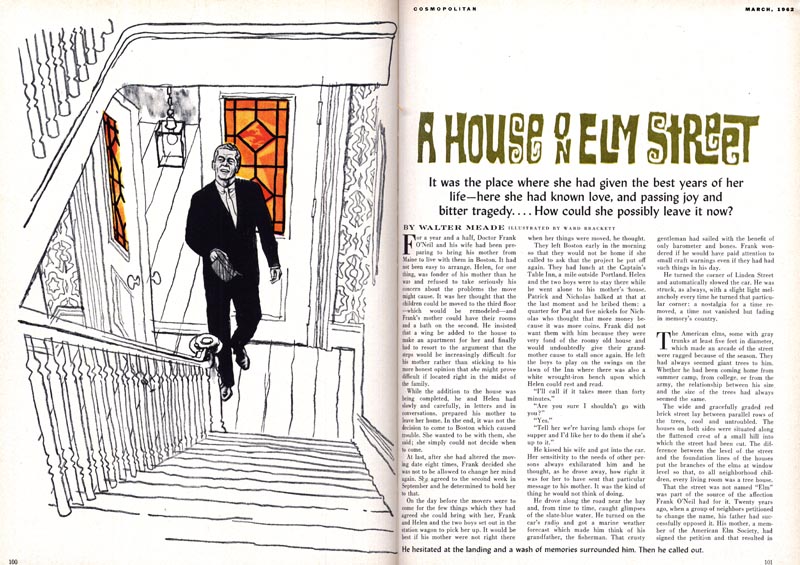
Now, this is not your father's Ward Brackett.
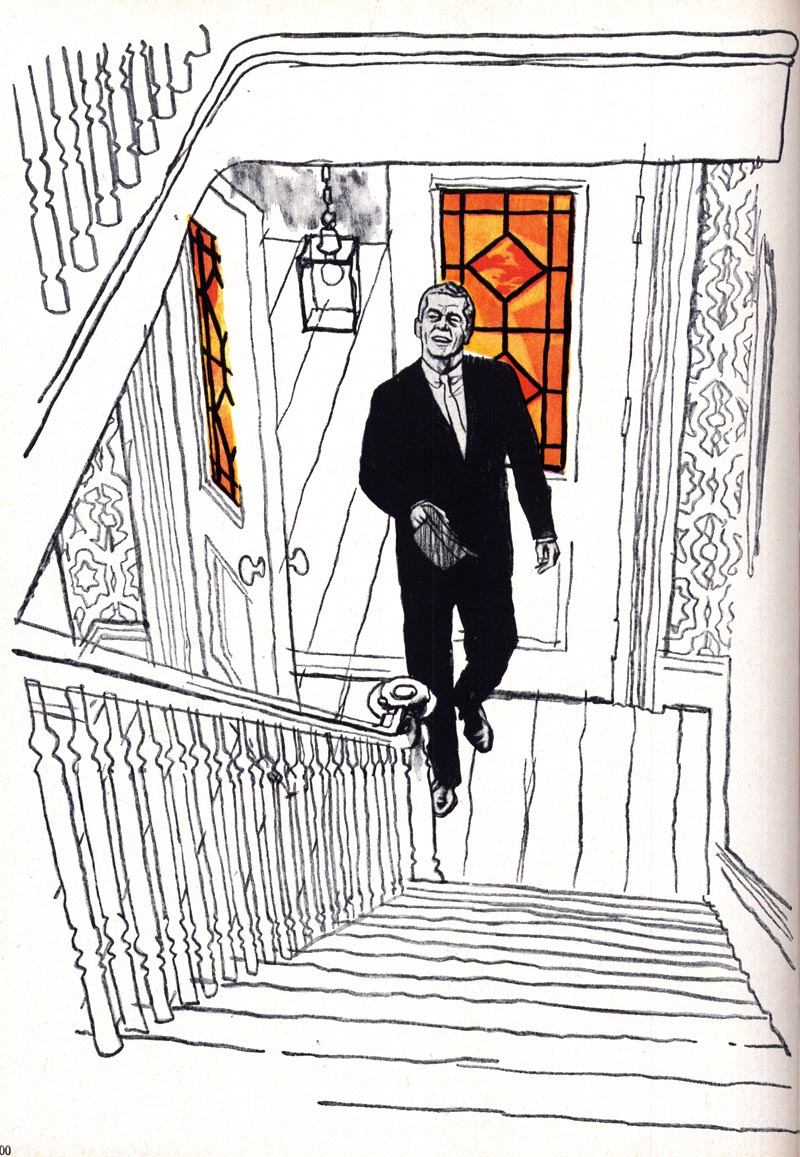
What triggered the change... and was Brackett a leader or a follower?
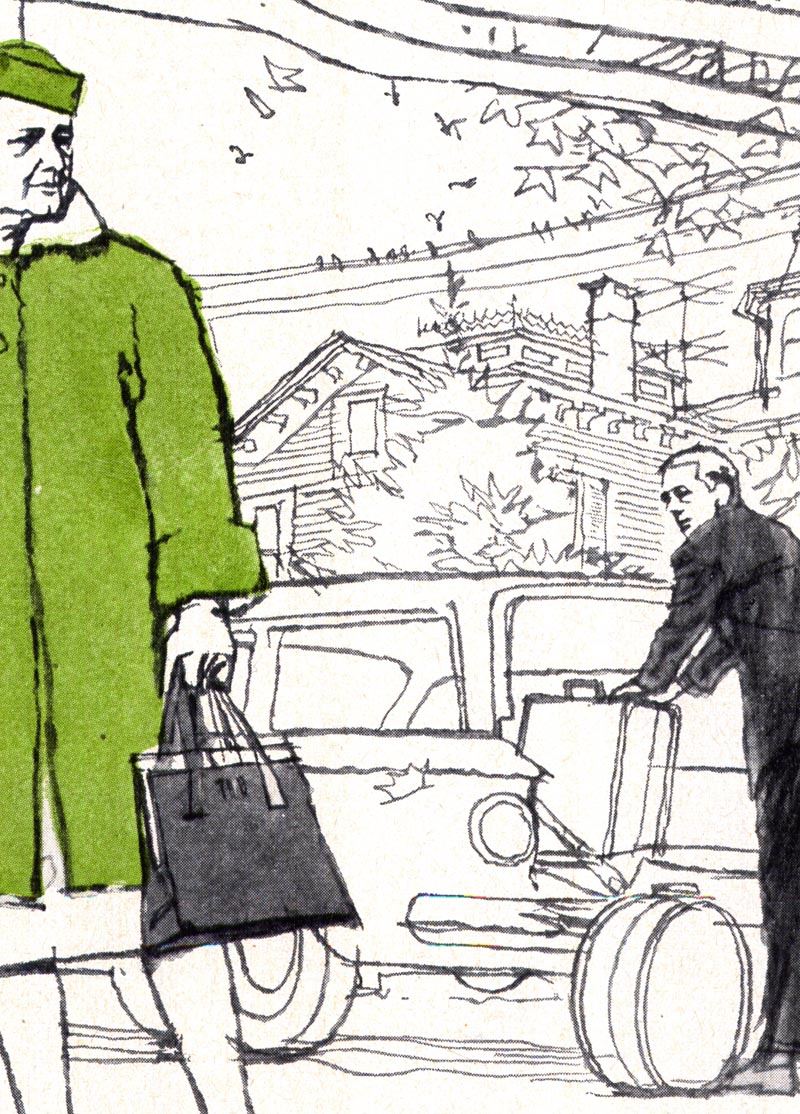
In Walt Reed's seminal book, The Illustrator in America, Reed writes that Ward Brackett decided in mid-career to return to school, to the Brooklyn Museum, where he studied with Reuben Tam. Is this stylistic transformation a result of those studies?
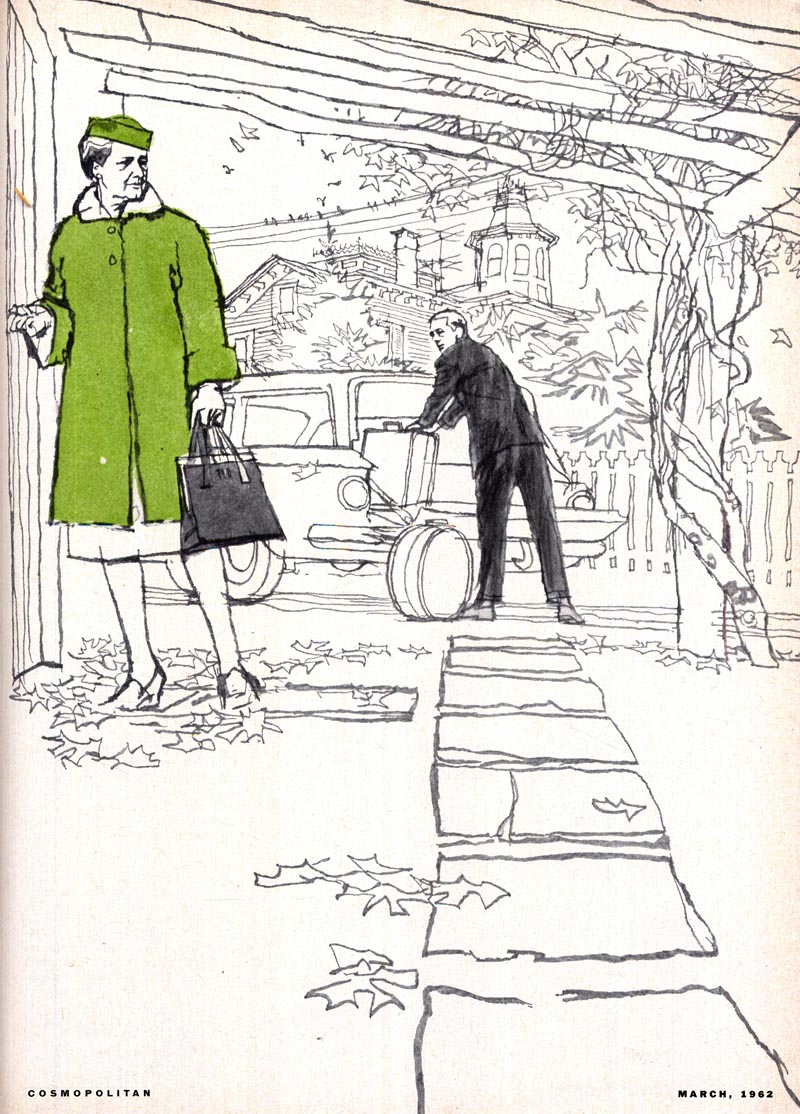
Here's more Ward Brackett art from around the same period - from a 1963 Reader's Digest Condensed Books story.
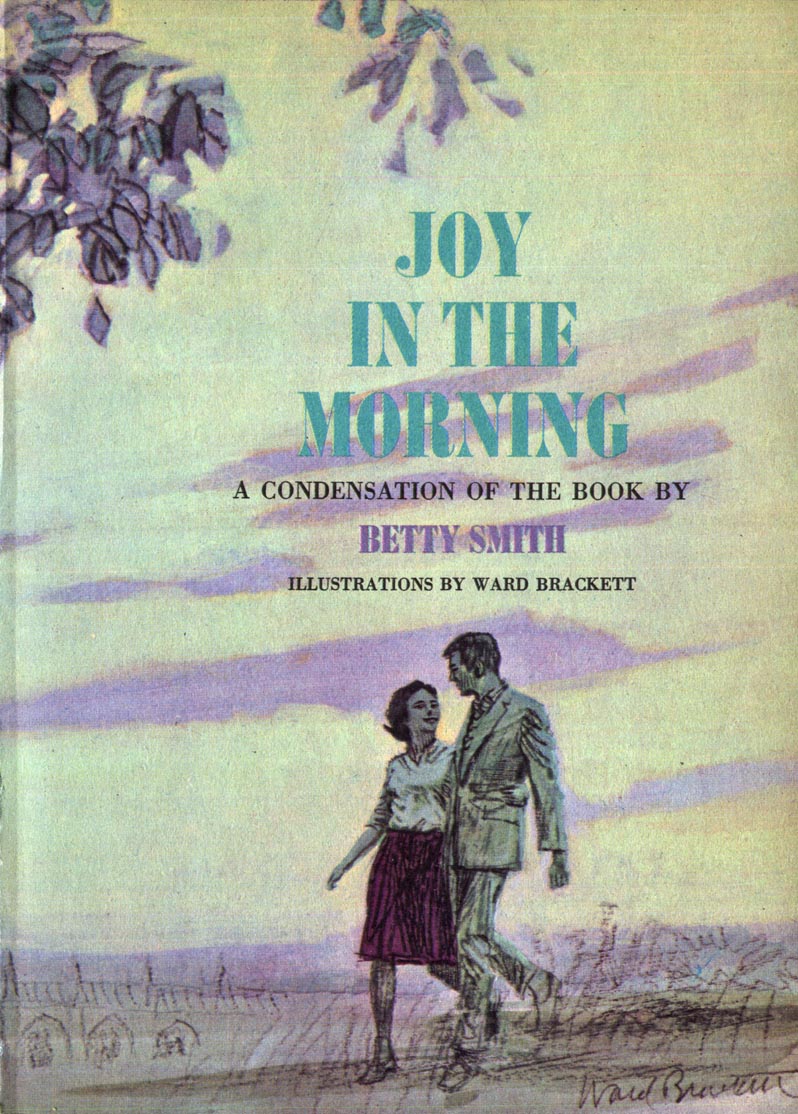
While researching Brackett online last weekend I came across an interesting anecdote from French comics writer, Jean-Pierre Dionnet.

Dionnet recounts how, a few years ago, while discussing the work of Bob Peak and Bernie Fuchs with Jim Steranko, the legendary comic artist/illustrator told Dionnet to look at Ward Brackett's work, suggesting that was where Peak and Fuchs had first found the inspiration for their early revolutionary stylistic efforts.
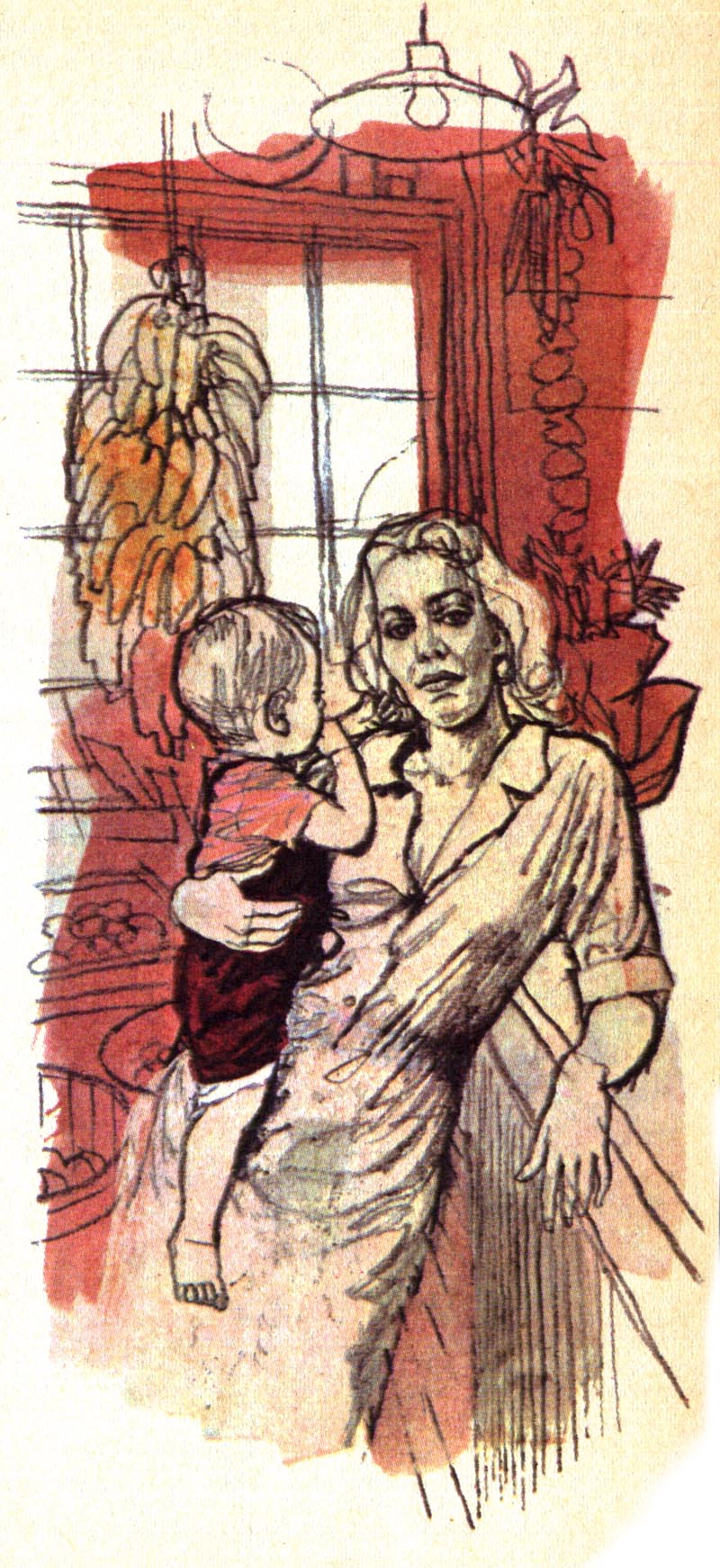
Dionnet writes, "One day I finally found an original Ward Brackett and I understood. Yes, yes, this style - falsely fast but all the necessary details are there..."
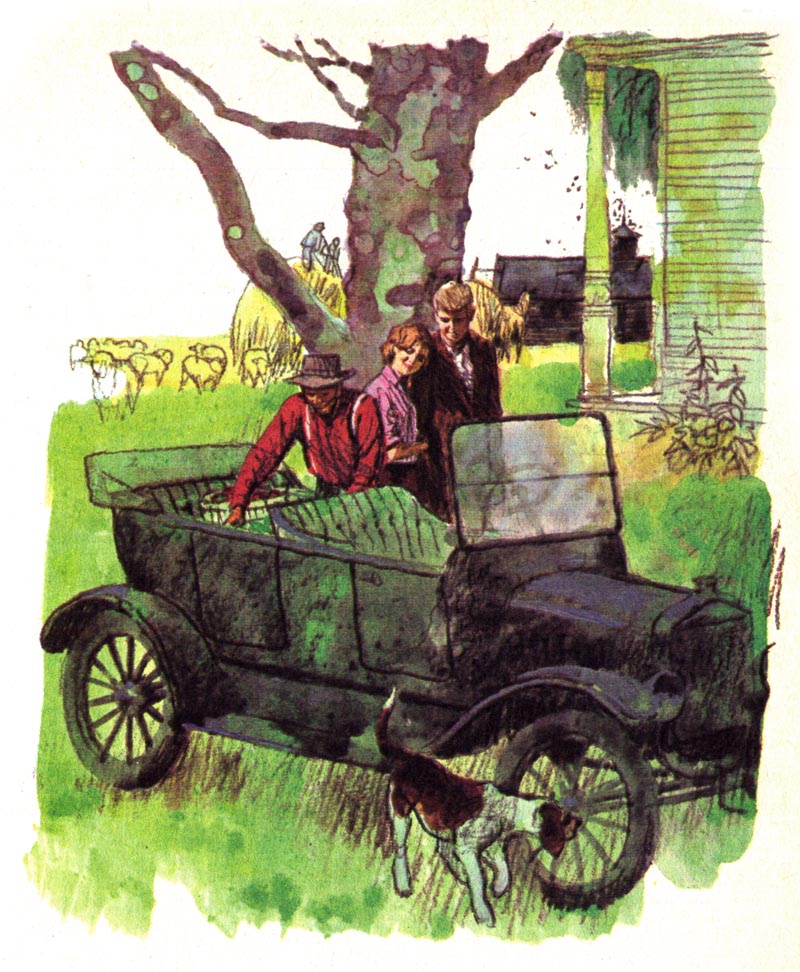
"... just good Ward Brackett, who was a GI who married a Japanese woman and stayed fifteen years after the war, inventing the new American style from then some Japanization." [Google's imperfect translation from the French]
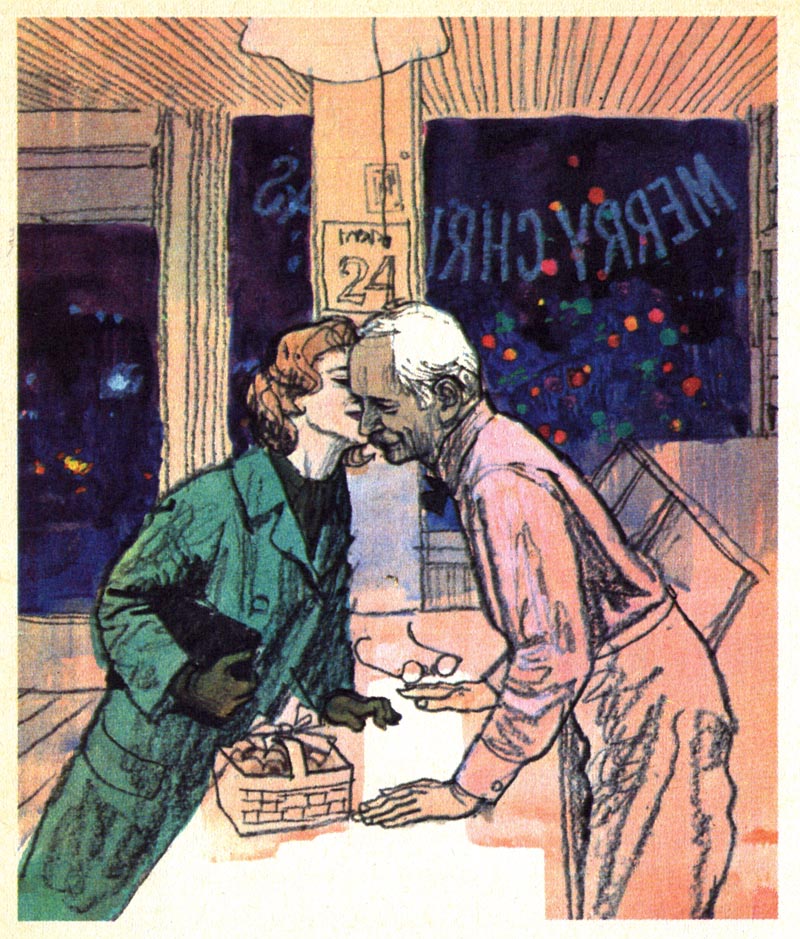
The story sounds mixed up - because we know Brackett didn't stay in Japan for 15 years after WWII. But still... could it be that Ward Brackett, enjoying a fine but much less spectacular career than Peak and Fuchs, was actually the stylistic catalyst for these two giants of the illustration business?
* My Ward Brackett Flickr set.

Fine, competent work - but very 'straight.'

That same year, Brackett art from Cosmopolitan magazine. Here once again you can see Brackett using the opportunity of story illustration to try something just a little bit different. But hardly adventurous.

Fast forward to 1962, again in Cosmo magazine.

Now, this is not your father's Ward Brackett.

What triggered the change... and was Brackett a leader or a follower?

In Walt Reed's seminal book, The Illustrator in America, Reed writes that Ward Brackett decided in mid-career to return to school, to the Brooklyn Museum, where he studied with Reuben Tam. Is this stylistic transformation a result of those studies?

Here's more Ward Brackett art from around the same period - from a 1963 Reader's Digest Condensed Books story.

While researching Brackett online last weekend I came across an interesting anecdote from French comics writer, Jean-Pierre Dionnet.

Dionnet recounts how, a few years ago, while discussing the work of Bob Peak and Bernie Fuchs with Jim Steranko, the legendary comic artist/illustrator told Dionnet to look at Ward Brackett's work, suggesting that was where Peak and Fuchs had first found the inspiration for their early revolutionary stylistic efforts.

Dionnet writes, "One day I finally found an original Ward Brackett and I understood. Yes, yes, this style - falsely fast but all the necessary details are there..."

"... just good Ward Brackett, who was a GI who married a Japanese woman and stayed fifteen years after the war, inventing the new American style from then some Japanization." [Google's imperfect translation from the French]

The story sounds mixed up - because we know Brackett didn't stay in Japan for 15 years after WWII. But still... could it be that Ward Brackett, enjoying a fine but much less spectacular career than Peak and Fuchs, was actually the stylistic catalyst for these two giants of the illustration business?
* My Ward Brackett Flickr set.
Leif-- an interesting theory from Steranko, but it seems unlikely to me. If you asked Fuchs, he would be quick to give credit to a number of important influences from the 1950s, primarily Al Parker and Austin Briggs. He would also name Whitmore and Bowler (who he copied as part of his assignments in art school), as well as Robert Weaver and others, but I'm not sure Brackett would be on his list, and the timing doesn't seem to work. Fuchs had already worked quite successfully in his "falsely fast" approach before moving to New York in 1959, although some of this was for Detroit clients without national exposure. His work in that style for Good Housekeeping and McCall's, while still living in Detroit, was part of what created the demand for his work in NY. And by the time he was working for Dick Gangel at Sports Illustrated in 1961, he was already ablaze.
ReplyDeleteI don't know what Brackett was doing between 1956 and your example from 1962, but he would really have had to turn the corner no later than 1958 for the timing to make any sense.
Thanks David;
ReplyDeleteI kind of thought so too - esp. what with the mix-up in the back story about Brackett staying in Japan for 15 years after the war. I suspect that Steranko may not have referred to Brackett at all and that Dionnet is misremembering who Steranko actually credited with influencing Peak and Fuchs.
Do you happen to know of any other illustrator from that era to whom he might be referring?
And since there is that 5-6 year hole in my collection of Brackett artwork I'm not able to say when Brackett began transitioning to his newer style...
David, I think you are right on target. Before I read your comment, I had exactly the same reaction. That was a long time ago for me to recall all the specific time lines, but I do remember that by 1962 Peak and Fuchs had forged ahead in innovative technique in comparison to Brackett's 62 illustrations posted here on TI.
ReplyDeleteWhen I entered art school in 1958, economy of line and simpler paint application was being introduced by the more innovative illustrators like Parker, Briggs, Weaver, Bouche, Potter, Sickles, Koehler and some others.
My 1959 N.Y. Society of Illustrators annual shows one Ward Brackett magazine story illustration. The carefully planned composition is innovative (an "L-shape" composition with a large amount of negative space), and he was beginning to simplify his rendering using more line and flatter tones in the foreground and background. However, the cluster of three figures on the far right are fully resolved, but with a somewhat more painterly technique than his earlier 50s' technique. It is in black and white, so I can't comment on the color. It's apparent to me that it is not lagging behind the times in its experimental approach.
I suspect that, like many other top illustrators, one eye was always looking around at what was being done by his contemporaries, as well as studying the illustrators and fine artists of past.
Tom Watson
I am not a Peak or Fuchs expert, and I never met either of them while they were alive but I too would have to disagree with the statement that Bracket influenced Peak and FUchs. Just look at this image from HA.com
ReplyDeletehttp://comics.ha.com/common/view_item.php?Sale_No=110053&Lot_No=13577
seem like he was more influenced by Fuchs than the other way around. And since David mentioned Fuchs influences I thought I would mention one of Peaks. Jack Potter. One of Jack Potters students told me that when Peak came out of school he was hungry for work and looked to top illustrators to mimic to make a living. Potter was big in the late 50's and Peak went to see Potter in his studio. Not long after Peaks work was much linear and started getting work and the rest is history. Again heard through the grapevine. Would be interesting to have that story or some variation of it confirmed. But either way I can see the line influence but Peak made it his own very fast.
oh and the line work for the March 1962 Cosomo issue. WHile I really like that piece a lot, it has a Briggs feel very similar to this Briggs piece in fact
ReplyDeletehttp://www.flickr.com/photos/leifpeng/2634268772/in/set-1502331/
So based on Davids first hand information of Fuchs, you could say then that Briggs influence both Bernie and Brackett.
Nice stuff -- but I noted: "But hardly adventurous."
ReplyDeleteI like the use of pipes in these old illustrations though -- they give them a (now) radical feel, since pipe smoking almost disappeared in US culture. They are the most striking element in these "hardly adventurous" examples. A bit of a Mad Men feel.
Does the pen and wash style (with its sense of unfinishedness) have a distinct name? I notice that Reader's Digest really grooved on this style in the late fifties, early sixties. Who was the originator of that style? Forgive me, I'm only an admirer, not an illustrator.
Great post. thanks
Wes
Wes,
ReplyDeleteI hope I can shed some light on your questions. Pen line and wash has been around as long as illustration, and before. It's a fast direct method of implying clarity to realism and it dries quickly compared to oil paint. Line and wash never really became obsolete, because of its speed, efficiency and reproduction quality.. especially on inexpensive paper stock like newsprint. Acrylics weren't around until the end of the 50s', but they became quite popular and even preferable in the 60s' and beyond. Gouache (opaque water color) was the preferred medium in the later 40s' and 50s'. And before that oil paint was widely used.
I have always heard of it referred to as "line and wash" or "line and tone". The line could be pen, pencil, brush or a pointed stick dipped in ink, depending on the illustrator's preference. One of its major qualities is a crisp clean, fresh appearance, when rendered properly. It was also often used in fashion illustration. Robert Fawcett, Noel Sickles, Denver Gillen and Ken Dalison, to name a few, were masters at line and wash. And, each had their own distinct way of applying it.
Tom Watson